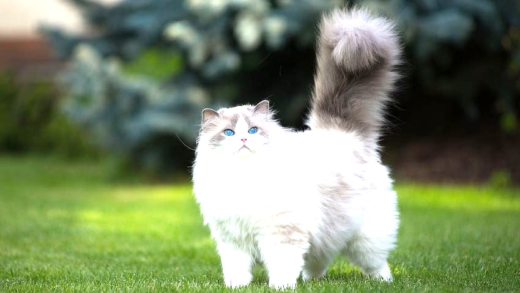This article covers the characteristics, care requirements, and benefits of large chicken breeds. It includes insights into their personality traits, ideal environments for raising them, and compares their egg production. The key breeds discussed are Jersey Giant, Brahma, and Cochin.
Largest Chicken Breeds: A Look at the Heaviest Chicken Breeds
When it comes to large chicken breeds, size matters. These birds are not just big; they’re impressive in their stature and characteristics. The heaviest chicken breeds include the Jersey Giant, Brahma, and Cochin. Each of these breeds has unique traits that make them stand out in the poultry world.
- Jersey Giant: Known for its massive size, the Jersey Giant can weigh up to 13 pounds. Originally bred in the United States in the late 19th century, this breed was developed to replace turkeys for meat production.
- Brahma: This breed is a gentle giant, often weighing between 8 to 12 pounds. Brahmas are recognized for their feathered legs and calm demeanor, making them ideal for backyard flocks.
- Cochin: With their fluffy feathers and round bodies, Cochins can reach weights of 8 to 11 pounds. They are friendly and great for families, especially with children.
In summary, the largest chicken breeds offer both size and personality, making them a popular choice for many chicken enthusiasts.
Weight of Giant Chickens: How Much Do These Breeds Actually Weigh?
Understanding the weight of giant chickens is crucial for anyone considering raising them. The weights of these breeds can vary significantly, but here are some key figures:
- Jersey Giant: Up to 13 pounds.
- Brahma: 8 to 12 pounds.
- Cochin: 8 to 11 pounds.
- Orpington: 8 to 10 pounds.
- Langshan: 7 to 10 pounds.
These weights indicate that large chicken breeds not only take up more space but also require more feed and care. It’s important for prospective owners to be prepared for the additional responsibilities that come with these hefty birds.
Unique Characteristics: What Sets Each Large Chicken Breed Apart?
Each large chicken breed has its own unique characteristics that make them appealing to different types of chicken keepers. Here’s what sets them apart:
- Jersey Giant: Known for their size and meat production, they have a calm temperament and can be quite friendly. Their feathers are typically black or white.
- Brahma: Famous for their striking appearance with feathered legs, they are also known for their docile nature. They are excellent layers, especially in colder climates.
- Cochin: With their soft, fluffy feathers, they are one of the most visually appealing breeds. Cochins are friendly, making them perfect for families and children.
These characteristics not only define their appearance but also influence their behavior and suitability for various environments.
Egg Production Comparison: How Do These Breeds Stack Up in Egg-Laying?
Egg production is a significant factor when choosing a chicken breed. While large chicken breeds are often raised for meat, some also offer decent egg-laying capabilities. Here’s how they compare:
- Jersey Giant: Produces around 150-200 eggs per year, primarily in the brown variety.
- Brahma: Known to lay about 150-200 eggs per year as well, Brahmas also produce brown eggs.
- Cochin: While not as prolific, they lay around 150 eggs annually, often in the medium brown variety.
Overall, while large breeds may not match the egg production of smaller layers, they still provide a respectable output alongside their meat production capabilities.
Benefits of Keeping Large Breeds: Why Choose Giant Chickens for Your Flock?
Keeping large chicken breeds offers several advantages for poultry enthusiasts. First and foremost, these giant chickens are excellent dual-purpose birds. They provide both meat and eggs, making them a valuable addition to any flock. Here are some key benefits:
- Meat Production: Large breeds like the Jersey Giant are specifically bred for meat, yielding a substantial amount of high-quality chicken.
- Docile Nature: Many large breeds, such as Brahmas and Cochins, have gentle temperaments, making them great for families and children.
- Unique Appearance: Their size and unique feather patterns can be visually striking, adding charm to your backyard.
- Resilience: Larger chickens often adapt better to varying climates, making them suitable for a range of environments.
In summary, large chicken breeds not only provide substantial meat and egg production but also offer friendly personalities and resilience, making them an excellent choice for any poultry keeper.
Care Requirements: What Do You Need to Know About Caring for Giant Chickens?
Caring for giant chickens requires specific considerations compared to smaller breeds. Their size influences not just their space requirements but also their diet and health management. Here are essential care tips:
- Housing: Provide ample space in coops and runs. Each bird should have at least 4 square feet inside and 10 square feet outside to roam.
- Nutrition: Feed large breeds a balanced diet rich in protein to support their growth and egg production. Look for feed specifically formulated for heavy breeds.
- Health Monitoring: Regularly check for common health issues, such as obesity, which can affect their mobility. Routine vet check-ups are advisable.
- Social Interaction: Large chickens enjoy companionship. Keeping them in groups helps maintain their social structure and reduces stress.
Overall, ensuring proper housing, nutrition, and health care will keep your large chickens thriving and productive.
Historical Background: Where Do These Large Chicken Breeds Come From?
The history of large chicken breeds is quite fascinating. Many of these breeds were developed for specific purposes, primarily meat production. For instance:
- Jersey Giant: Bred in the late 19th century in the United States to replace turkeys as a meat source.
- Brahma: Originating from China and India, Brahmas were brought to America in the 1850s, becoming popular for their size and hardiness.
- Cochin: Developed in China, Cochins were introduced to the West in the mid-19th century and were valued for their meat and ornamental appeal.
These breeds have been shaped by their environments and the needs of poultry keepers over the years, leading to the impressive giants we see today.
Personality Traits: How Do Large Chickens Behave Compared to Smaller Breeds?
Large chicken breeds exhibit distinct personality traits that can differ significantly from their smaller counterparts. Understanding these traits is essential for potential chicken owners. Here are some characteristics typical of large breeds:
- Docility: Many large chicken breeds, such as Brahmas and Cochins, are known for their calm and gentle nature. They are less likely to be skittish, making them ideal for families, especially those with children.
- Friendliness: Large chickens tend to be sociable and enjoy human interaction. They often approach people and can be quite affectionate, which adds to their charm as pets.
- Curiosity: These breeds are often curious, exploring their environment with interest. This trait can lead to entertaining behavior as they investigate new objects or changes in their surroundings.
- Intelligence: Large chickens are generally intelligent and can be trained to follow basic commands or respond to their names. This makes them engaging pets and easier to manage in a flock.
In summary, the personality traits of large chickens contribute to their suitability as family pets and their ease of care. Their friendly and curious nature can make them a delightful addition to any backyard flock.
Best Environment: What’s the Ideal Setup for Raising Large Chicken Breeds?
Creating the right environment for large chicken breeds is crucial to their health and productivity. Here are key considerations to ensure an optimal setup:
- Space Requirements: Large chickens need ample space to move freely. Each bird should have at least 4 square feet inside the coop and 10 square feet in the run. Overcrowding can lead to stress and health issues.
- Coop Design: A well-ventilated coop is essential. Ensure it has adequate airflow to prevent overheating and moisture buildup. Nesting boxes should be spacious and comfortable, allowing hens to lay eggs without disturbance.
- Outdoor Space: Large breeds benefit from a secure outdoor area where they can forage and roam. A fenced yard or run with natural elements like shrubs and dust baths is ideal for their well-being.
- Climate Considerations: Ensure that the environment is suitable for the specific large chicken breed. Some breeds are more tolerant of cold weather, while others may need shade and cooling in hot climates.
In conclusion, providing a spacious, safe, and climate-appropriate environment is vital for raising healthy large chickens. Attention to these details will enhance their quality of life and egg production.





Comments are closed.